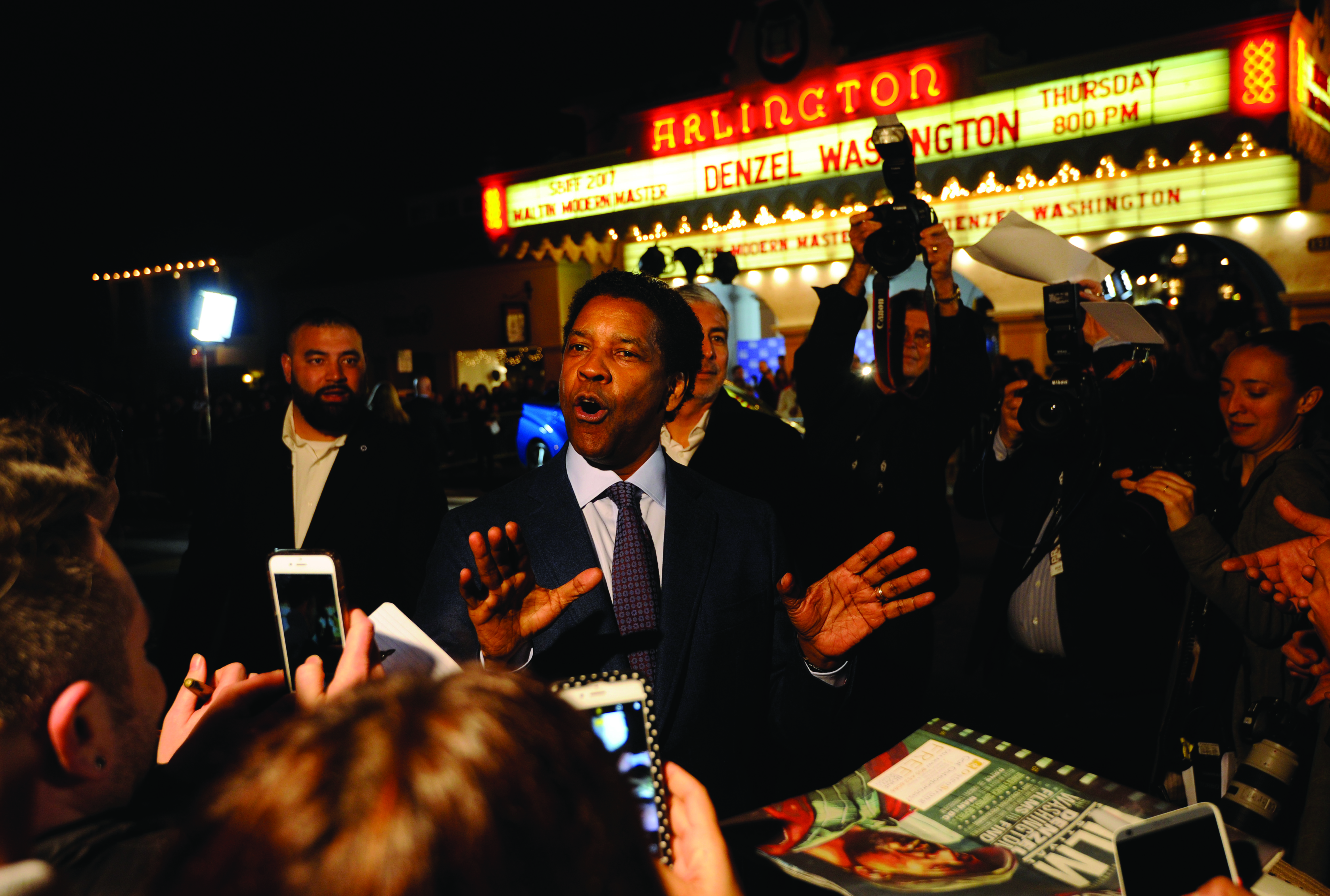SBIFF 2017: Mid-Fest Wrap
What’s Happened So Far at the Fabulous Santa Barbara International Film Festival

By general consensus, according to my very informal survey, the Santa Barbara International Film Festival (SBIFF) film cited as the best of fest — five days in, anyway — is Raoul Peck’s stunning and inventive I Am Not Your Negro, which imaginatively addresses texts by James Baldwin and swatches of history to convey the strongest study/indictment of racism I’ve ever seen. One of the salient features of Peck’s cinematic strategy is its heavily film-centric content, blending documentary reportage on various front lines — from the 1963 flashpoint Birmingham church bombing to the 2014 killing of Michael Brown in Ferguson — with film clips dating back to the silent film era. Via this strategy, viewers are hit by little depth charges and instant responses, from racist roles for blacks to a singing, whiter-than-white Doris Day starkly juxtaposed against harrowing photographic reminders of lynchings in the South.
Never underestimate the power of film to move a public, in ways both immediate and deep memory-etching.
The ongoing power, mass mythology, and collective-conscience-defining nature of film (even in the age of diminished attention spans, personal-screen obsession, and TV’s ascendancy) blends in with social and political issues, sometimes without being overt about it. That’s a message broadcast and writ large at the SBIFF, which makes the possibility of using the festival as an avoidance tactic against ugly, prevailing Trump-era realities virtually impossible. As usual, the 32nd annual SBIFF, strategically timed during award-season hoopla, is well stocked with Hollywood names in the houses — Denzel Washington, Ryan and Emma (Gosling, Stone), the understatedly magnificent Casey Affleck and Michelle Williams, Oscar-nommed directors and writers — but there’s so much going into making SBIFF the major festival cultural event in town.
Roger Durling, the longtime charismatic head of the fest, set the tone on opening night, featuring the life-affirmative doc Charged, about accident-surviving celebrity chef/motivational speaker Eduardo Garcia. Durling prefaced the screening with a larger point about the medium at the center of the 11-day, 200-ish film festival in progress, stopping short of naming names or controversies: “Film festivals build bridges between cultures. There are no walls here … artists tear down walls. We, as citizens, can do the same.”
References to pressing realities in the American socio-political game keep naturally popping up, as when Croatian director Rajko Grlić spoke to the packed crowd at the first screening of his boldly anti-prejudice film The Constitution. Asked whether the infamous unrest in recent Balkan history has helped fuel that region’s current renaissance of important cinema, he agreed, and turned the compass to us: “Just wait. In five years, you will also have a lot of good stories to tell.”
Meanwhile, SBIFF is serving its other important function, aside from greasing the Oscar buzz wheels and giving us access to Hollywood on State Street: allowing an invaluable, concentrated exposure to the ways, attitudes, ambiences, and imaginations of the world via a large menu of current “international” cinema. Some of the strongest entries so far have come from places such as Iran (The Salesman), Argentina (The Distinguished Citizen), Germany (Hands of a Mother), Sweden (Sámi Blood, Strawberry Days), and, oh yes, select quarters of America (I Am Not Your Negro).
With list-making tendencies in tow, here lies one humble festival-goer’s premature Top 10, halfway to the finish line: I Am Not Your Negro, Chasing Trane, My Life as a Zucchini, Sámi Blood, Strawberry Days, The Salesman, Mali Blues, The Distinguished Citizen, Hands of a Mother, and Land of Mine.



